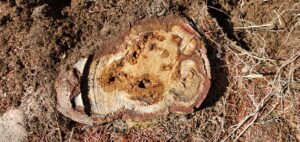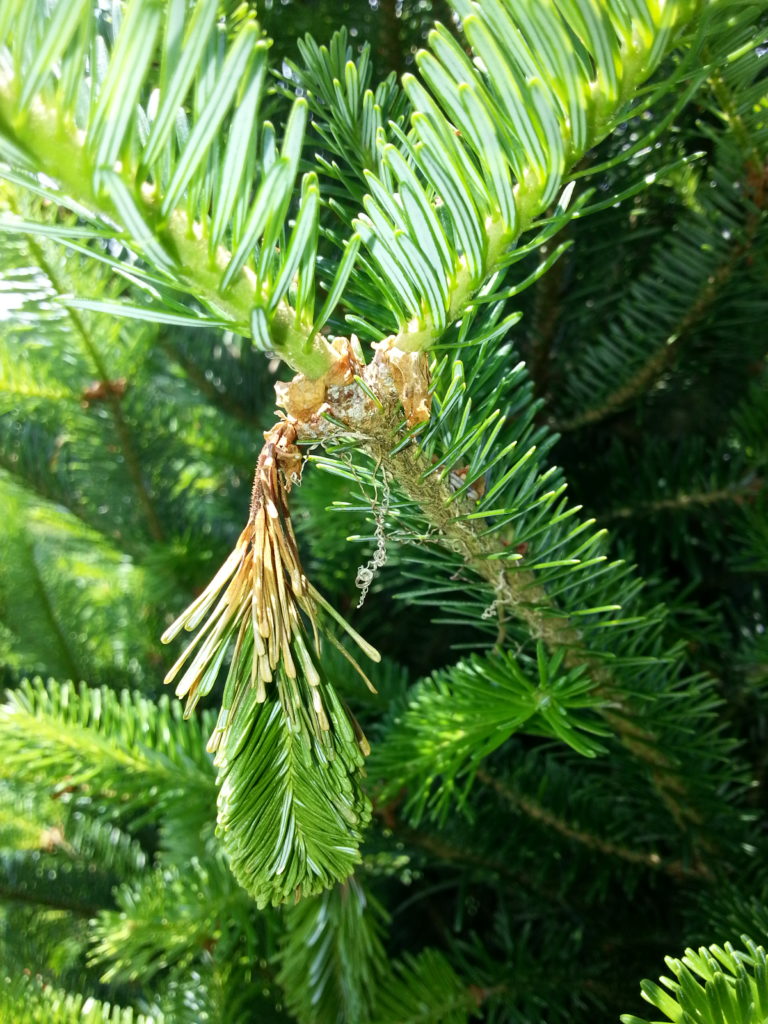Scouting for Diseases
go.ncsu.edu/readext?792430
en Español / em Português
El inglés es el idioma de control de esta página. En la medida en que haya algún conflicto entre la traducción al inglés y la traducción, el inglés prevalece.
Al hacer clic en el enlace de traducción se activa un servicio de traducción gratuito para convertir la página al español. Al igual que con cualquier traducción por Internet, la conversión no es sensible al contexto y puede que no traduzca el texto en su significado original. NC State Extension no garantiza la exactitud del texto traducido. Por favor, tenga en cuenta que algunas aplicaciones y/o servicios pueden no funcionar como se espera cuando se traducen.
Português
Inglês é o idioma de controle desta página. Na medida que haja algum conflito entre o texto original em Inglês e a tradução, o Inglês prevalece.
Ao clicar no link de tradução, um serviço gratuito de tradução será ativado para converter a página para o Português. Como em qualquer tradução pela internet, a conversão não é sensivel ao contexto e pode não ocorrer a tradução para o significado orginal. O serviço de Extensão da Carolina do Norte (NC State Extension) não garante a exatidão do texto traduzido. Por favor, observe que algumas funções ou serviços podem não funcionar como esperado após a tradução.
English
English is the controlling language of this page. To the extent there is any conflict between the English text and the translation, English controls.
Clicking on the translation link activates a free translation service to convert the page to Spanish. As with any Internet translation, the conversion is not context-sensitive and may not translate the text to its original meaning. NC State Extension does not guarantee the accuracy of the translated text. Please note that some applications and/or services may not function as expected when translated.
Collapse ▲The following are some additional pests that you might find while scouting.
Phytophthora root rot: Phytophthora root rot is a disease of Fraser fir caused by a fungus that lives in the soil. The primary cause of the disease is the fungus, Phytophthora cinnamomi, but other species of Phytophthora have also been identified. These fungi attacks tree roots and grow up into the trunk of the tree. Phytophthora root rot is worse where the soil stays wet. Tree damage includes yellowing needles, wilting, dead branches, and tree death. Phytophthora root rot and white grubs cause similar looking damage to trees. Send samples to Plant Disease and Insect Clinic for confirmation of Phytophthora.

Trees dying from Phytophthora root rot

The outer portion of roots killed by Phytophthora root rot will slip away from the inner core, helping to determine the cause of tree death
How to identify Phytophthora root rot:
- Pattern of tree decline will follow water drainagethrough the field.
- Tree symptoms including foliage turning light green, wilted new growth, dead branches at the bottom of the tree, cankers on trunks near the base of the tree, and dead trees that are rust colored.
- Dead trees are easy to pull out of the ground.
- Dead roots and the outer portion of the root slips off of the inner core when pulled.
- No feeding evident in roots. Root system intact though dead and rotting.
- Cutting into the trunk reveals red-brown lesion under the bark running up the trunk of the tree from the roots.
- Fungi may be growing on the surface of the dead roots but these are secondary organisms. Phytophthora species are not visible to the naked eye.

Annosus root rot
Annosus root rot: Heterobasidion occidentale is a soil fungus associated with several species of conifers. Spores infect freshly cut stumps. Infection spreads from stumps to roots of healthy seedlings or trees that contact infected wood. In North Carolina, issues are typically associated when white pines are cut near Christmas tree farms.
How to identify Annosus root rot:
- Tree symptoms include yellowing foliage and reduced growth though affected trees may not show any symptoms.
- The wood of infected trees may become rotted and stringy. Dark staining of older wood may be evident.
- Roots may exhibit decay.
- Fruiting bodies of the fungus may be found.

Shoots killed by Botrytis have a lesion at the base where they join the branch
Botrytis shoot blight: Botrytis causes shoot death in the spring, usually in sites with high humidity and in springs with late frosts. Nothing can be done about Botrytis shoot blight in field-grown trees. Dead shoots usually fall off or removed during shearing. In greenhouse-grown seedlings, however, Botrytis can cause seedling blight that can be controlled with fungicides.
How to identify Botrytis:
- Wilting and death of new growth.
- Lesion at the base of the shoot on new growth. Sometimes fungal spores and growth can be seen as a grey mold. This can help distinguish from frost injury.

White spores of fir/fern rust erupting from the underside of infected needles.
Fir/fern rust: This rust disease alternates between firs and ferns – that is the spores produced on the ferns infect fir trees, and the spores produced on the fir trees infect the ferns. The fir/fern rust in western North Carolina is Uredinopsis americana (formerly called Uredinopsis mirabilis) which alternates between Fraser fir and sensitive fern. It is occasionally a problem along the edges of blocks of trees near woods where ferns are abundant.
How to identify fir/fern rusts:
- Yellowing needles on newest growth, typically appearing in the summer. These needles may drop prematurely.
- White spores emerging from the underside of needles.
- Presence of ferns in neighboring woods also exhibiting fungal spores.

Black fungal spores erupting from underside of needle infected with Rhizosphaera needlecast
Needle casts: Rhizosphaera pini, similar to Rhizosphaera kalkoffi which causes a needle blight on Colorado blue spruce and other conifers, is not believed to be an aggressive pathogen of Fraser fir and may simply be sporulating on already dead needles.
How to identify Rhizosphaera needle cast:
- Red needles attached to stem. Premature needle shed.
- Black spores emerging from underside of needles in rows.
- Consult local Extension agent to determine if further diagnostics are required to determine cause of problem.

Rosellinia blight showing fungal mat and spore structures.
Rosellinia blight: This infrequent disease is associated with large, dense trees with little air movement around them.
How to identify Rosellinia blight:
- Dead needles back in tree canopy.
- Mats of greyish fungus among needles. Round, dark grey fungal spore structures are also sometimes though not always observed.

Nectria canker
Nectria canker: This infrequent disease caused the tops of trees to die back into the trunk of the tree.
How to identify Nectria canker:
- Trees dying from the terminal downward.
- Cankers in the trunk. Cracked bark. Red fungal spore structures forming on the bark.
Sooty mold: Black fungal growth on needles and shoots due to the presence of honeydew produced by aphids or soft scales.
How to identify sooty mold:
- Black fungal growth can be wiped off of otherwise healthy, green needles.
Algae: Algae is often found growing on needles of trees grown in areas with little air movement where foliage doesn’t dry out until late in the morning.
How to identify algae:
• Green to grayish discoloration on needles though current year’s growth is not affected.
• Discoloration on the needle can be rubbed off of the needle surface to reveal the normal green needle underneath.
For more information on Phytophthora root rot see Phytophthora root rot.
For more information on minor diseases see Minor Pests.
For the complete Fraser fir scouting manual for western North Carolina, see Scouting Manual.


